ANIMALS
The Bearded Dragon: A Surprising Guide to Your New Favorite Reptile
Published
2 months agoon
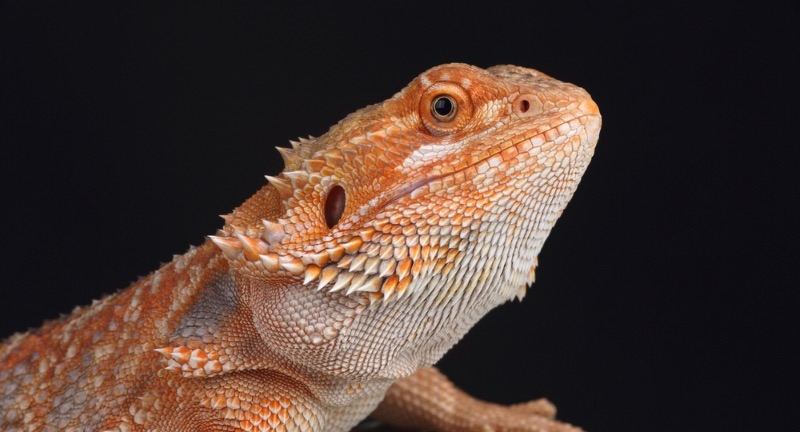
Shutterstock
Bearded dragons are some of the best pets you can have. They may seem like sunbathing lounge lizards, but they have a lot of personality and can even be trained to recognize their name! From their ability to swim like underwater ninjas to the way they rock back and forth to show off their moves, bearded dragons are full of unexpected surprises. Whether you’re a reptile super fan or a first-time dragon parent, these creatures are sure to steal your heart, and maybe even your seat!
Bearded Dragons Can Change Color Based on Mood or Temperature

Shutterstock
Bearded dragons have a fascinating ability to change color, and they do so for more than just camouflage. When they feel stressed, threatened, or angry, their skin might darken into a deep black, especially around their “beard.” When they’re feeling calm or warm, their colors can shift to a lighter hue, showcasing a range of browns, reds, and yellows. This color-changing mechanism is not only a way to regulate temperature, but it also serves as a form of communication with other dragons and creatures.
They Can Puff Up Their “Beard” to Appear Larger When Threatened

Shutterstock
One of the most striking behaviors of a bearded dragon is its ability to puff up its “beard” when feeling threatened. This inflated display makes them appear larger and more intimidating to potential predators or rivals. The beard itself turns a dark color, a visual cue that signals aggression or a defensive posture. It’s a survival tactic that helps them stand their ground or deter threats without the need for physical confrontation.
Bearded Dragons Can Sleep with Their Eyes Open

Shutterstock
Bearded dragons have a peculiar and interesting trait—sleeping with their eyes open. This unusual behavior likely comes from their natural instincts to stay alert and aware of their surroundings, even while resting. While they seem to be asleep, their eyes remain open, often giving them a look of calm attention. This adaptation is helpful for detecting threats or changes in their environment, ensuring their safety in the wild.
They Use Their Tongue to “Taste” the Air

Shutterstock
Bearded dragons are known to use their tongues in an unusual way—they “taste” the air! As they flick their tongues in and out, they’re collecting chemical signals from the environment to assess their surroundings. This helps them to detect food, potential mates, or even predators. The tongue serves as an essential sensory tool, allowing these reptiles to navigate their world with a keen sense of awareness.
Bearded Dragons Can Run Up to 9 Miles Per Hour

Shutterstock
Despite their somewhat slow appearance, bearded dragons can actually sprint up to 9 miles per hour! This incredible speed is mostly used for escaping predators, as they are naturally prey animals in the wild. Their quick, agile movements allow them to dash for cover or retreat to higher ground when danger approaches. Their surprising speed also makes them excellent hunters, capable of catching insects on the move.
They Have a Third Eye on the Top of Their Head Called a Parietal Eye

Shutterstock
Bearded dragons possess a fascinating third eye, known as the parietal eye, located on the top of their head. This eye isn’t used for vision like the other two, but rather detects changes in light and dark, helping them sense the time of day. It’s thought to assist in regulating their circadian rhythms and avoiding danger from above, such as birds of prey. The parietal eye is a remarkable evolutionary feature that gives them an added layer of awareness in their environment.
They Often “Wave” One of Their Front Legs as a Sign of Submission or Greeting

Shutterstock
Bearded dragons are known for their friendly and quirky behavior, such as “waving” one of their front legs. This is a signal of submission or a greeting, commonly seen in social interactions with other bearded dragons or even their human owners. The waving gesture is believed to convey a peaceful intent and to show that they do not pose a threat. It’s an endearing behavior that sets them apart from many other reptiles and strengthens their bond with their environment.
Bearded Dragons Can Regenerate Their Tail if It Gets Damaged or Lost

Shutterstock
Like some other reptiles, bearded dragons have the remarkable ability to regenerate their tails if they lose them. This regenerative process happens after a tail is shed or injured, and a new tail begins to grow back. The regrown tail isn’t an exact replica of the original but serves as a functional replacement. This skill helps them survive in the wild, as losing a tail can often be a defense mechanism to escape predators.
They Are Capable of “Basking” in the Sun for Hours Without Getting Sunburned

Shutterstock
One of the most intriguing abilities of bearded dragons is their capacity to bask in the sun for long periods without suffering from sunburn. This is due to their natural habitat, where they are accustomed to spending hours under the harsh desert sun. Their skin and scales provide a protective barrier that shields them from harmful UV rays. This adaptation allows them to soak in the sun for warmth and vitamin D production without the risk of overheating or damage.
Bearded Dragons Can Change Their Behavior Depending on the Time of Day

Shutterstock
Bearded dragons exhibit different behaviors throughout the day, typically becoming more active during the daytime. They are diurnal creatures, meaning they are most active when the sun is up, foraging for food and basking in the warmth. As the evening approaches, they slow down and become more passive, preparing to rest. This natural circadian rhythm helps them conserve energy and maintain optimal health.
They Can Perform a “Head Bob” to Assert Dominance

Shutterstock
The “head bob” is a distinctive movement often used by bearded dragons to assert dominance or establish territory. This behavior is commonly observed when they feel the need to assert themselves in a social interaction, particularly with other dragons. It involves rapidly bobbing their heads up and down, signaling a confident or aggressive stance. This action plays an essential role in their social structure and can sometimes even be a part of courtship rituals.
Bearded Dragons Have an Unusually Long Lifespan for Reptiles, Living Up to 10-15 Years in Captivity

Shutterstock
Unlike many other reptiles, bearded dragons are known for their relatively long lifespans, living up to 10-15 years in captivity. This extended life is supported by the proper care and attention they receive in their environments. In the wild, their lifespan may be shorter due to predators and environmental challenges, but in captivity, they thrive with a balanced diet, UVB lighting, and suitable temperatures. Their longevity makes them a rewarding pet for dedicated reptile owners.
They Can Recognize Their Owners and Respond to Them

Shutterstock
Bearded dragons are surprisingly intelligent and can recognize their owners over time. They can learn to associate certain people with feeding times, and some will even respond to their owner’s voice or appearance. These reptiles can form a bond with their caretakers, showing signs of curiosity and affection. This level of recognition and bonding is uncommon in many reptile species, making bearded dragons unique as pets.
Bearded Dragons’ Mouths Are Equipped with Tiny, Sharp Teeth Designed for Gripping Food

Shutterstock
Bearded dragons possess tiny but sharp teeth that are specifically designed for gripping their food. Unlike many reptiles that tear their prey, they tend to chew and break down food in their mouths with these teeth. This adaptation makes them highly effective at eating a variety of foods, from insects to vegetables. Their teeth also assist in holding onto slippery foods like worms or fruits, which they might otherwise have trouble catching.
They Have a “Beard” That Inflates and Turns Black When They’re Angry or Scared

Shutterstock
The “beard” of a bearded dragon is an incredible feature that inflates and darkens when they are feeling angry or scared. This visual cue is a direct response to stress or perceived threats and is a powerful display meant to intimidate rivals or predators. When a dragon is calm, the beard remains flat and lighter in color, but in moments of tension, it transforms into a blackened, puffed-up display. This behavior is one of the most iconic and dramatic aspects of their appearance.
Their “Beard” Can Also Be Used to Intimidate Predators

Shutterstock
Bearded dragons use their beard not only for communication but also as a defensive tool. When faced with a potential predator, they puff up their beards to make themselves look larger and more threatening. This physical display can often be enough to deter smaller predators or competitors from approaching. The inflated beard sends a clear message: “I’m not to be messed with,” and serves as a form of non-aggressive defense.
Bearded Dragons Sometimes Use Their Tail to “Flick” Insects Out of Their Environment

Shutterstock
Bearded dragons have an interesting behavior of using their tail to “flick” insects or debris away from their space. This action helps them manage their environment, keeping pests or unwanted items at bay. The tail flick is quick and precise, showcasing their coordination and agility. It’s a clever way to keep their territory clean and comfortable, especially in the wild where insects might swarm around them.
A Bearded Dragon’s Eyes Are Capable of Moving Independently of Each Other

Shutterstock
One of the most unique features of bearded dragons is their ability to move their eyes independently of each other. This remarkable skill allows them to keep an eye on their surroundings without having to move their head. With one eye focused on the ground for food, the other can scan the horizon for threats or mates. It’s a powerful survival tool that gives them a broader field of vision than most other animals.
They Can “Sweat” Through Their Eyes When Overheated

Shutterstock
While most reptiles can’t sweat, bearded dragons have a unique ability to “sweat” through their eyes when they are overheated. This is a survival mechanism that helps them regulate their body temperature in extreme conditions. The moisture that forms around their eyes is a sign that they are trying to cool down. It’s a fascinating adaptation that makes them incredibly resilient to hot climates, especially in their native desert environments.
Bearded Dragons Use UVB Light to Produce Vitamin D3, Which Is Essential for Calcium Absorption

Shutterstock
Bearded dragons have a unique dependence on UVB light to synthesize vitamin D3, which is crucial for calcium absorption. Without proper exposure to UVB, they risk developing metabolic bone disease due to insufficient calcium levels. In captivity, they rely on special UVB bulbs to mimic the natural sunlight they would encounter in the wild. This biological process is essential for their overall health and helps maintain strong bones and proper muscle function.
They Can Be Trained to Recognize Simple Commands

Shutterstock
Bearded dragons are surprisingly trainable and can learn to recognize simple commands. With patience and consistency, they can be taught to respond to cues such as feeding time, coming when called, or even performing small tricks. This intelligence, although different from mammals, shows their adaptability and willingness to form bonds with their caretakers. It’s a fascinating aspect of their behavior that enriches their relationship with humans.
Bearded Dragons Are Opportunistic Omnivores, Eating Both Plant Material and Insects

Shutterstock
As opportunistic omnivores, bearded dragons have a varied diet that includes both plant material and insects. They eat a wide range of foods, such as leafy greens, fruits, and flowers, as well as crickets, mealworms, and other insects. This diverse diet ensures they get the necessary nutrients to thrive, and it’s important for owners to maintain a balanced feeding routine. Their ability to eat both plant and animal matter makes them adaptable to different environments and diets.
They Are Known to “Hunt” Food by Watching It Move, Rather Than Searching for It Themselves

Shutterstock
Bearded dragons tend to hunt food by observing it rather than actively seeking it out. They wait for prey, like insects, to come within their line of sight and then pounce with incredible precision. Their hunting strategy is based on their excellent vision, which can spot even the smallest movement from a distance. This behavior allows them to conserve energy while still securing their meals, making them efficient hunters in the wild.
A Bearded Dragon’s Tail Can Serve as a Defense Mechanism to Distract Predators

Shutterstock
In the wild, a bearded dragon’s tail is not just for balance and communication but also serves as a defense mechanism. If they feel threatened, they may use their tail to distract or confuse predators, often flicking or wiggling it rapidly. This unexpected movement draws attention away from their body, giving them a chance to escape. The tail can also be dropped in extreme situations, allowing the dragon to flee while the predator focuses on the detached appendage.
They Can “Shut Down” Their Metabolism During Extremely Cold Temperatures to Survive

Shutterstock
Bearded dragons have an incredible ability to survive extreme temperatures by shutting down their metabolism during colder periods. This state, known as brumation, is similar to hibernation in mammals and allows them to conserve energy when food is scarce. During brumation, their activity level drastically decreases, and they may even sleep for weeks at a time. This adaptation is vital for their survival in their natural desert habitat, where temperatures can drop drastically at night.
Bearded Dragons Are Known to Be Excellent Swimmers

Shutterstock
Despite their reputation as desert dwellers, bearded dragons are actually excellent swimmers. They are comfortable in the water and can swim across small bodies of water when necessary. Their natural swimming abilities allow them to escape from danger or explore new areas for food. This skill surprises many people, as it’s not commonly associated with desert reptiles, but it’s a testament to their adaptability and resilience.
They Use “Rocking” Movements to Communicate or Intimidate Other Dragons

Shutterstock
One of the more peculiar behaviors of bearded dragons is their “rocking” movement, which they use to communicate with other dragons or assert dominance. The dragon will slowly move its body back and forth, creating a rhythmic motion that may signal territorial boundaries or intimidation. This rocking behavior is often observed in more aggressive interactions, where the dragon is trying to ward off rivals. It’s a fascinating example of non-verbal communication in reptiles.
Some Bearded Dragons Have Been Observed “Smiling,” Which Is Not a Sign of Happiness but a Result of Their Facial Structure

Shutterstock
Bearded dragons often appear to be “smiling,” but this expression is not necessarily a sign of happiness. Instead, it’s due to the structure of their face and mouth, which naturally forms an upward curve. This quirk can sometimes give them a friendly or playful appearance, even if they are simply resting or unaware of their surroundings. This is just one of the many charming features that make them endearing to reptile enthusiasts.
Bearded Dragons Can Shed Their Skin in Pieces, Allowing for Growth

Shutterstock
Bearded dragons shed their skin in pieces, a process that helps them grow as they mature. Unlike some reptiles that shed in a single, large piece, they gradually shed parts of their skin over time. This shedding behavior is essential for their development, as it allows for the growth of new, larger skin beneath. It’s also a natural part of their health maintenance, with proper humidity and diet helping to ensure a smooth shedding process.
Bearded Dragons Have a Highly Sensitive “Third Eye” on Top of Their Head

Shutterstock
On top of their head, bearded dragons have a specialized sensory organ called the parietal eye, also known as their “third eye.” This organ doesn’t form images like their regular eyes but detects changes in light and movement, providing awareness of predators or threats from above. The parietal eye is crucial for helping them stay alert to danger from aerial predators such as birds. It’s a fascinating evolutionary adaptation that enhances their survival in the wild.
Bearded Dragons Have an Incredible Ability to Blend Into Their Environment

Shutterstock
Bearded dragons have a remarkable ability to blend into their environment through a process called “camouflage.” Their skin can change color and pattern to match the colors of the surrounding rocks, sand, or vegetation, which helps them hide from predators. This camouflage ability is an essential survival skill in their native desert habitats, where staying unseen can mean the difference between life and death. They can adjust their color to match their environment, making them masters of disguise.
Bearded Dragons Can Adjust Their Body Temperature by Basking in the Sun or Seeking Shade

Shutterstock
As ectothermic creatures, bearded dragons regulate their body temperature by basking in the sun or seeking out cooler areas. They rely on external heat sources to raise their body temperature to an optimal level for digestion and activity. In the wild, they often bask on rocks during the day to absorb heat and maintain energy levels. This behavior is critical for their survival, as they cannot produce their own body heat like warm-blooded animals.
They Are Social Creatures and Can Be Quite Affectionate Toward Their Owners

Shutterstock
Bearded dragons are surprisingly social creatures and can be quite affectionate toward their owners. They enjoy interacting with humans and may seek out attention or physical contact. Many owners report that their dragons will climb onto their shoulders or sit in their laps, showing trust and affection. This social nature is one of the reasons they are such popular pets, as they form strong bonds with their caretakers.
Conclusion

Shutterstock
These animals make great pets, but that is not all they have to offer, they’re loving companions with personalities as big as their beards. If you’re looking for a new friend who’s equal parts entertaining and low-maintenance, the bearded dragon might just be your perfect match. Remember, a dragon a day keeps the boredom away—well, as long as you’ve got a comfy spot for them to chill!
More Amazing Animals+
-
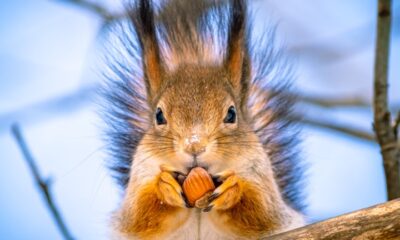

We Promise This Animal Is Not As Annoying As You…
-


Alligator strolls with police escort prior to being picked up…
-
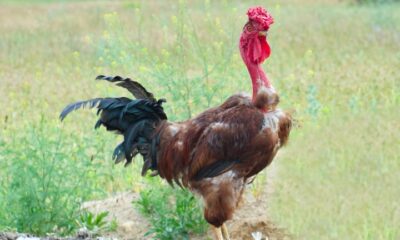

20 Of The Most Unusual Chicken Breeds
-


Love is in the air: Chihuahuas Peanut and Cashew get…
-
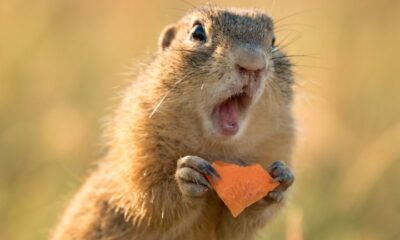

Secrets of the Squirrel Kingdom: 25 Amazing Facts
-
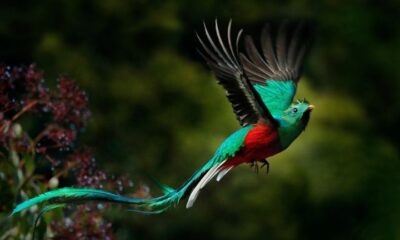

30 Most Beautiful Birds In North America
-
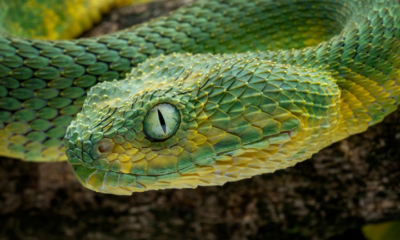

30 Most Venomous Animals In The World
-


18 Cool Facts About Reindeer That Go Beyond Santa’s Sleigh!
-
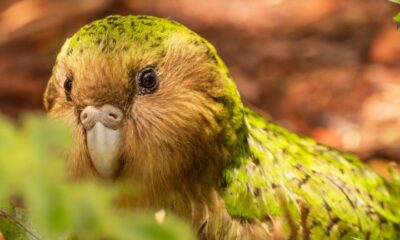

20 Animals At Risk Of Extinction That Need Our Help
-


More – Alligator arrest outside of a school in Charleston,…
-
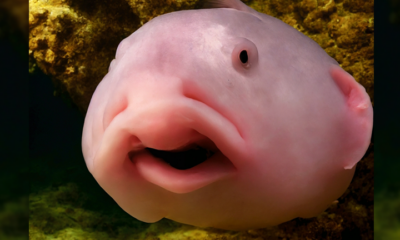

30 Weirdest Animals In The World
-
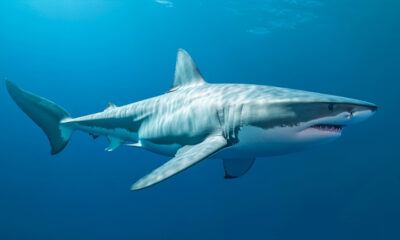

25 Fascinating Great White Shark Facts
